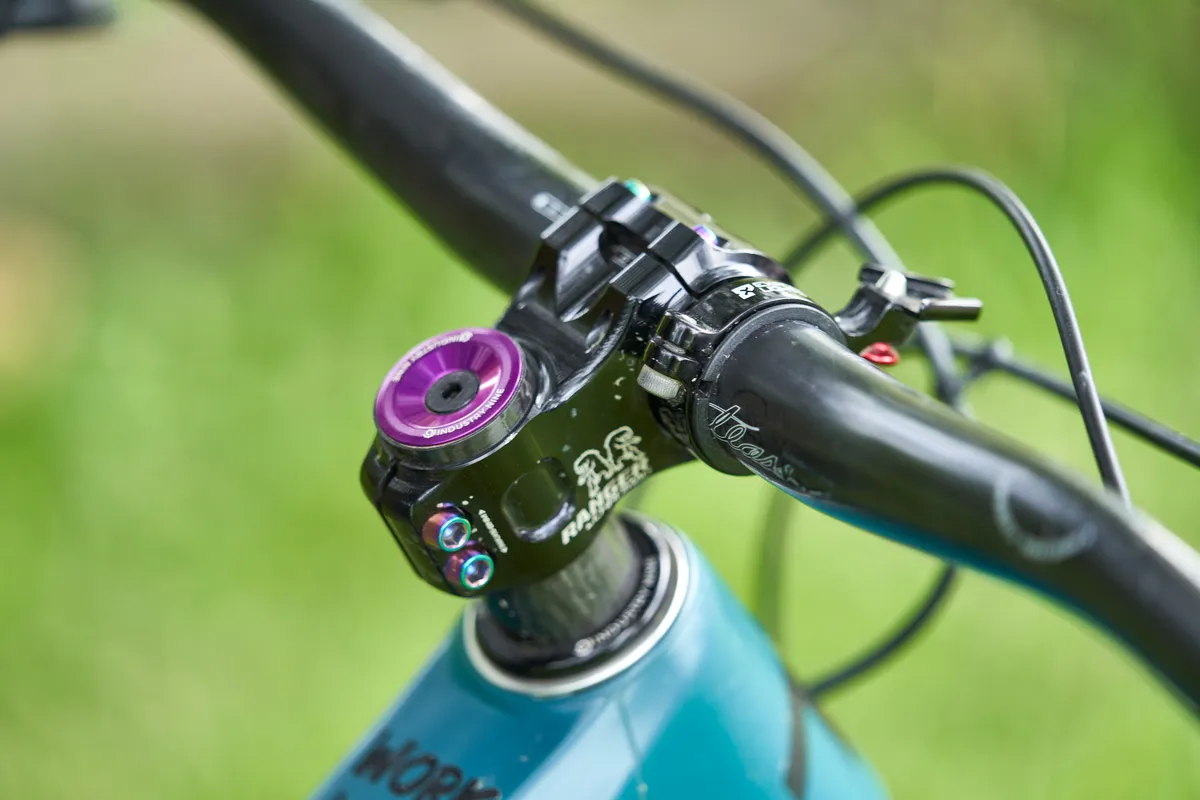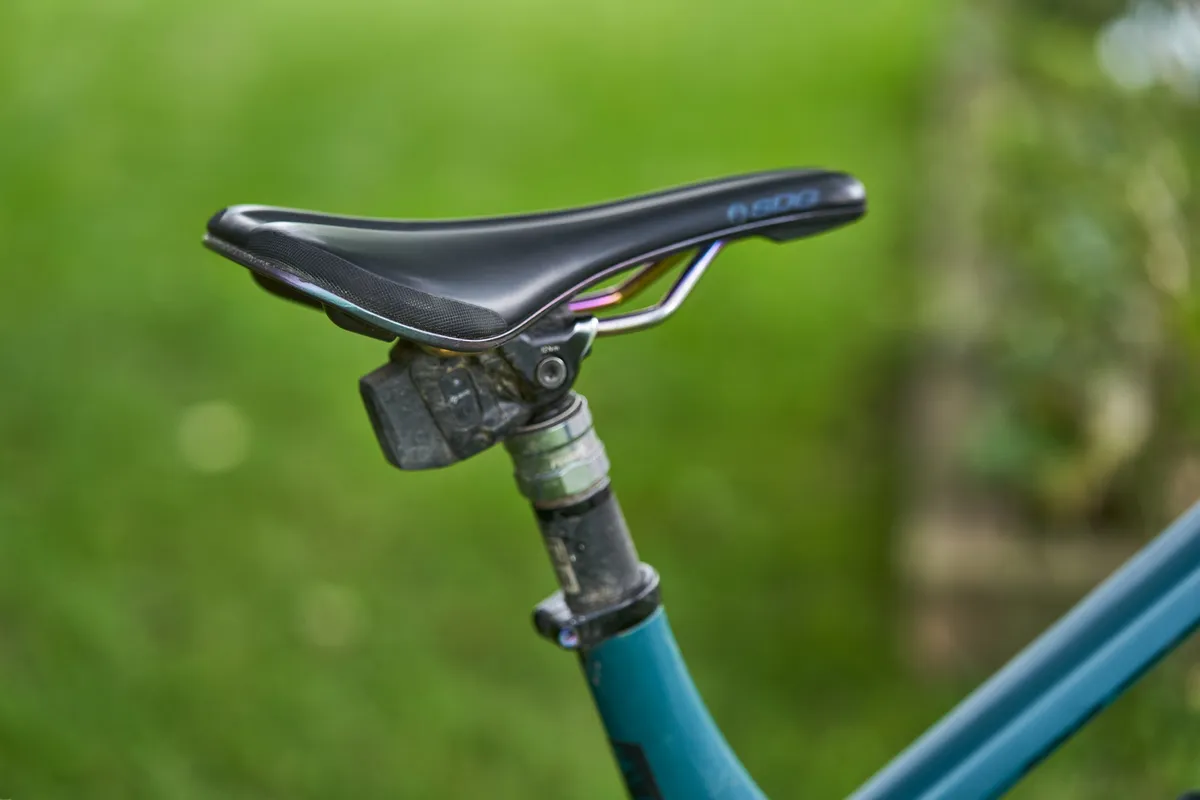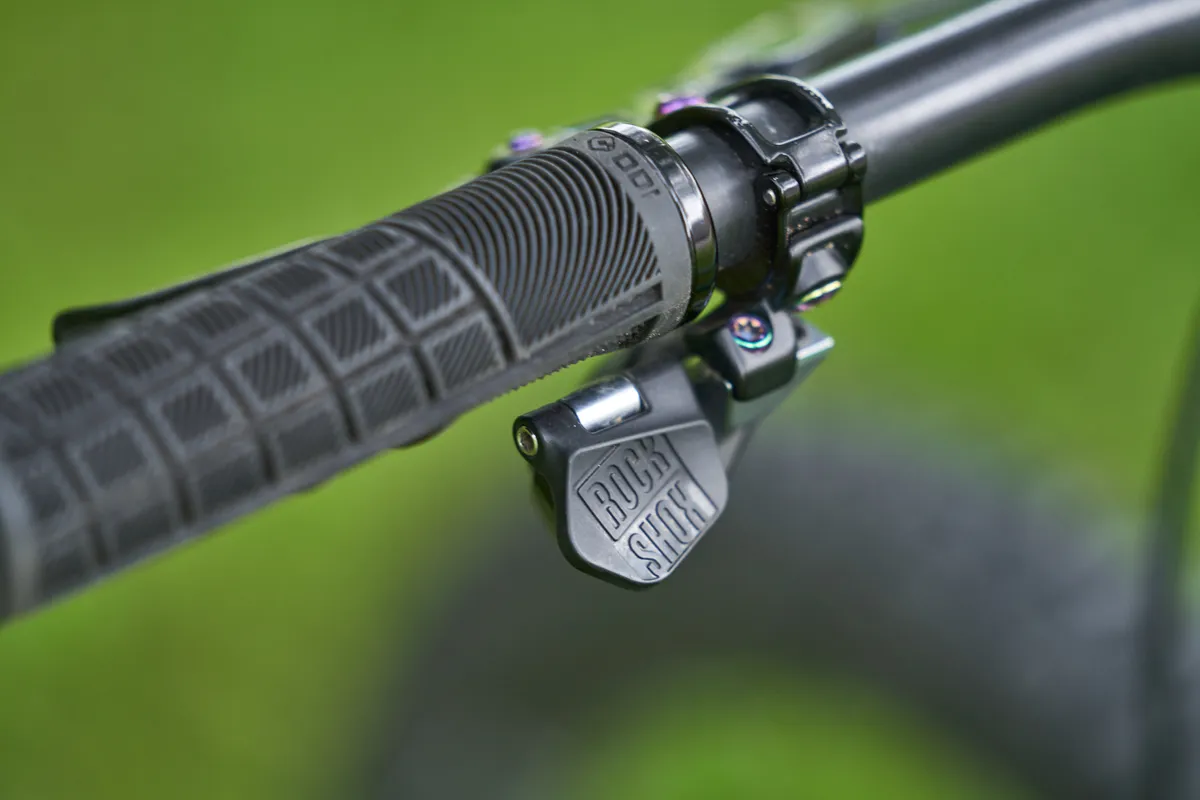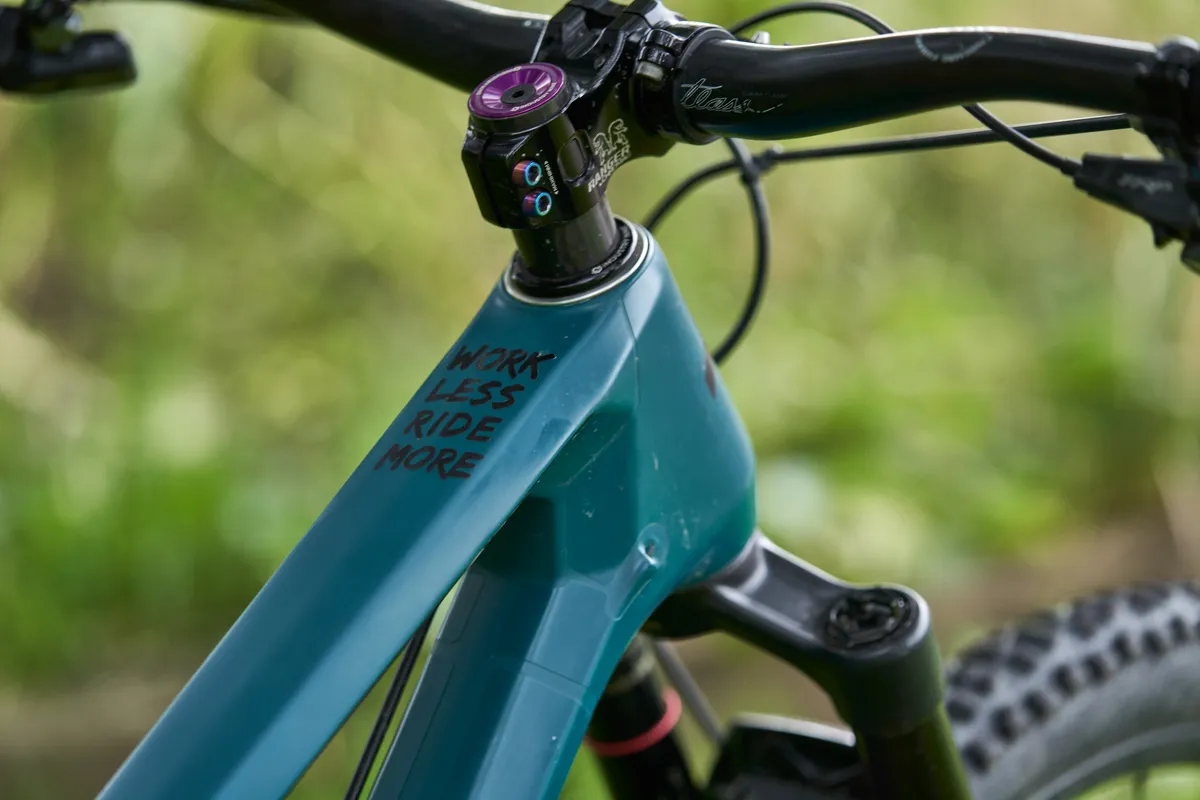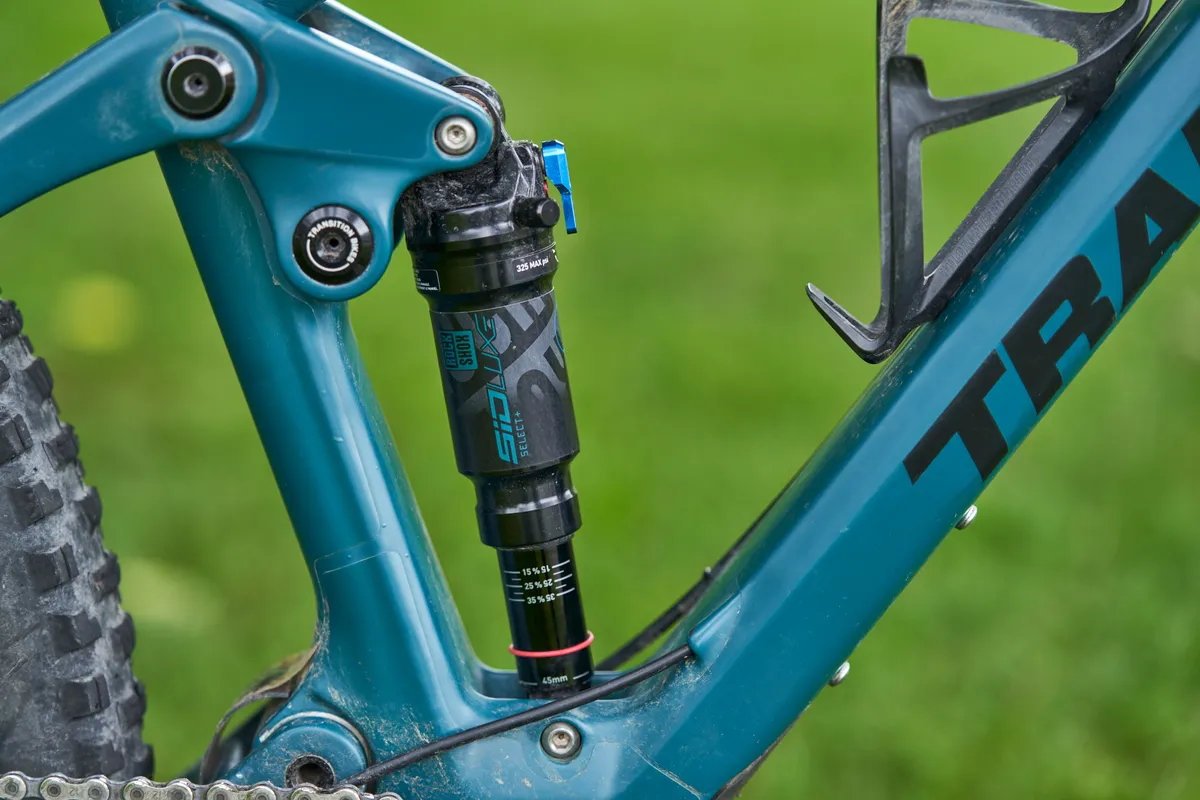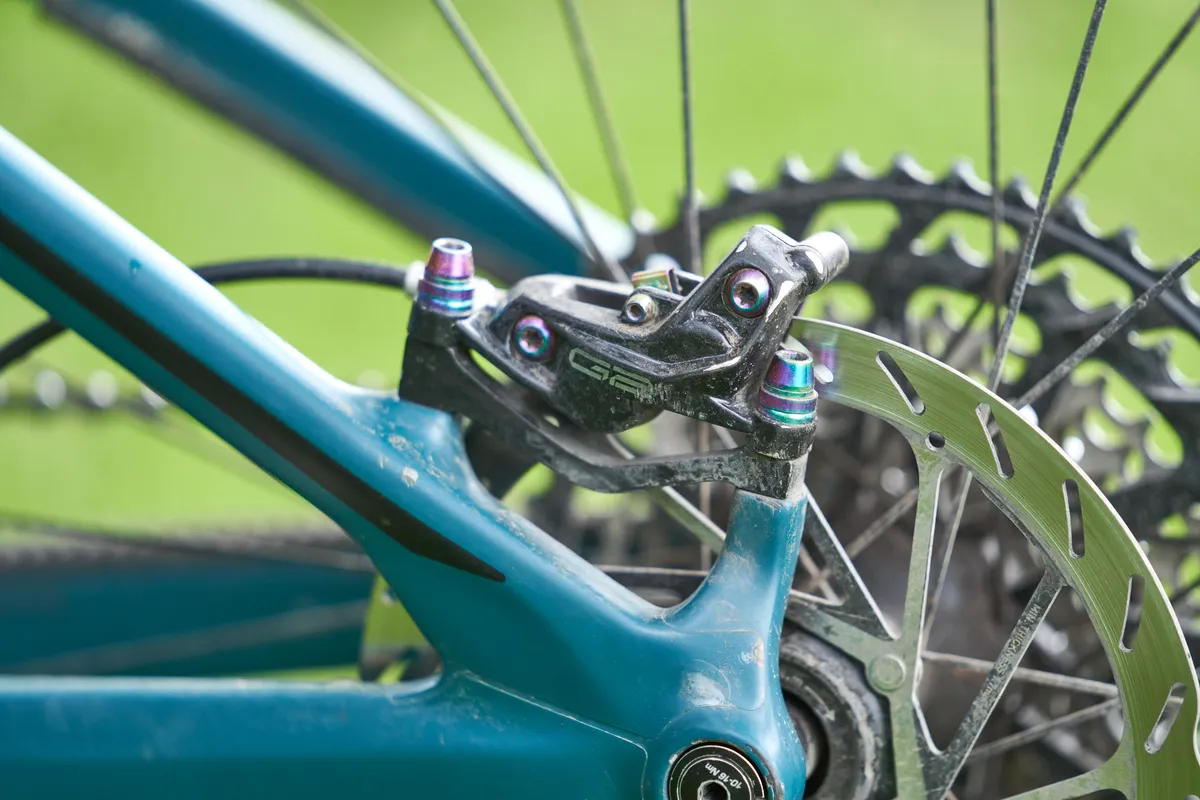Anyone who has met me will know how much I love banging on about my Transition Spur.
The Spur is neither particularly low-budget nor that hard-hitting – at least on paper. Two things it most definitely is, though, are a whole lot of fun and pretty darn versatile for a short-travel bike.
It’s fast enough that I can go for a proper XC thrash if I want to and comfortable enough for an epic day out in the Peak District. Yet it's potent enough on the downs that it can get me into and mostly out of trouble on descents that push my comfort zone a little bit.
In short, I flipping love it. In my mind, it's still one of the best downcountry bikes you can buy, even three years after its release.
The downcountry template
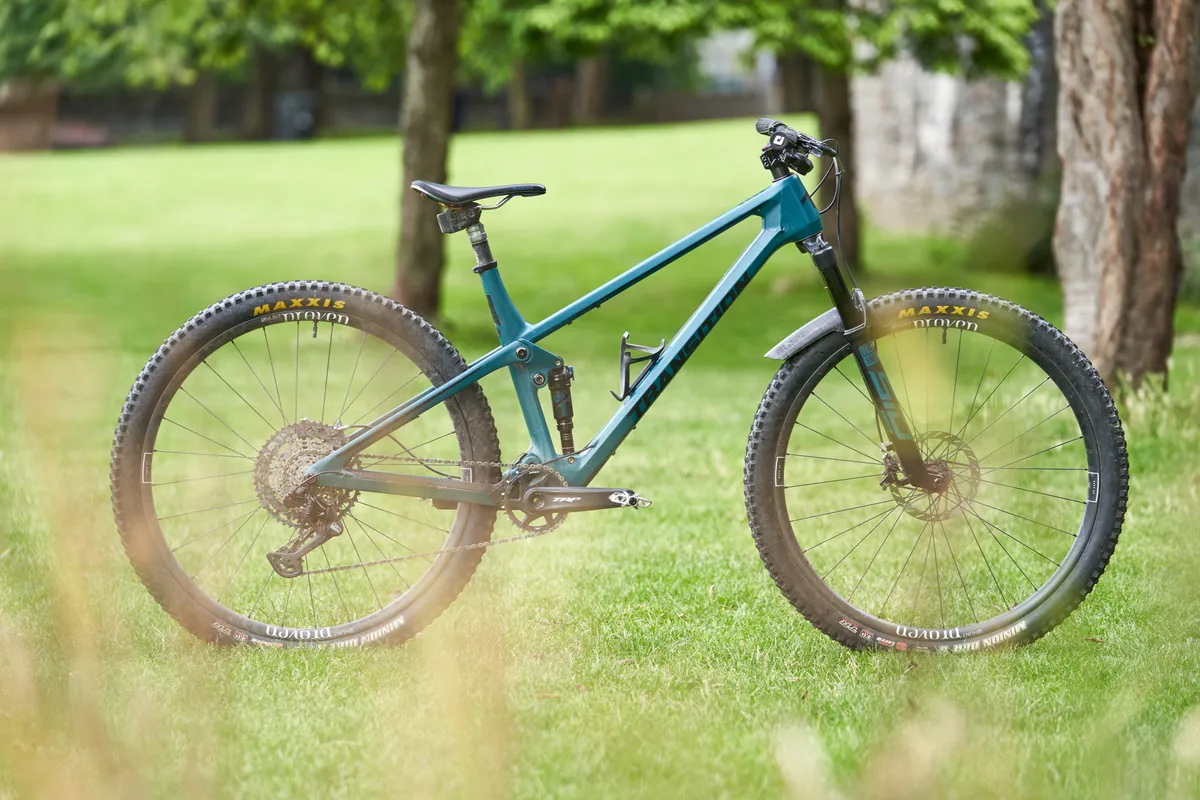
I’ve swapped out almost every component in the three years I’ve owned the Transition Spur, but I’ve never felt the urge to switch to another frame.
For one, it looks fantastic – the low-slung lines are super-clean. The run from the top tube into the seatstays is downright gorgeous.
Bikes are rarely a cheap investment and the ride is, of course, critically important. But it sure helps when even a quick glance at your rig of choice makes you want to go and ride.
It also helps that the Spur's geometry is bang on point – geometry trends move quickly, but the Spur has stood the test of time.
My size-large bike has a roomy 480mm reach. It's rangy without being too long on the tighter trails around the Midlands woods I sometimes call home.
Likewise, the 66-degree head angle is a perfect middle ground. It offers stable steering with the stock 50mm stem and my preferred 780mm-wide handlebar.
Moving backwards and the 75.9-degree seat angle is not the steepest these days. It’s plenty steep enough for me to move my weight around on the tech climbs I love, though.
The 435mm chainstays keep things nice and lively. Again, this helps the Spur strike the ideal balance between stability and agility.
I do tend to bash the end of the crank arms because the bottom bracket is pretty low, even with 170mm cranks. A touch more ground clearance wouldn’t go amiss – just as long as it didn’t mess too much with the Spur’s ridiculously fun feel in the corners.
I also can’t help but think a steeper seat angle would make it even better on the climbs. Yet there’s very, very little to quibble about when it comes to the Spur’s geometry.
Hooray for hassle-free TLC
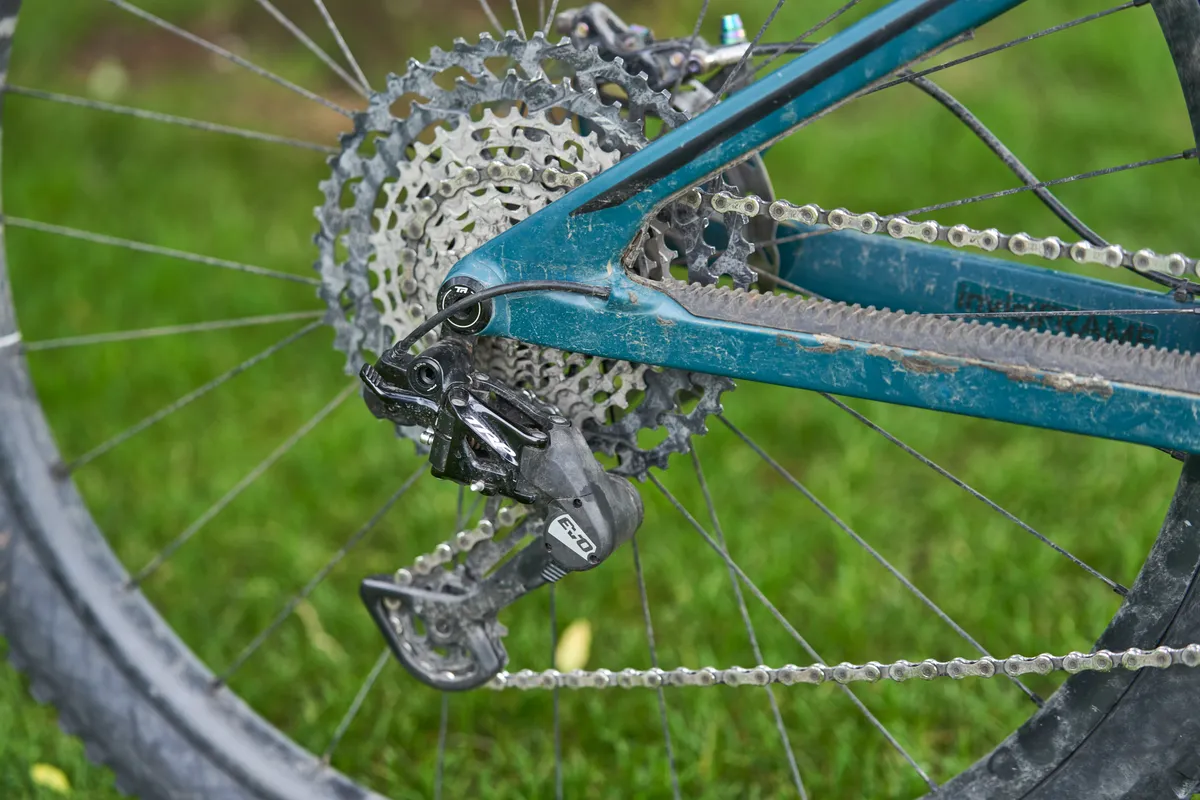
Mercifully for the maintenance-shy (like me), the Spur is also a dream to work on.
The external rear brake hose routing is hidden out of the way for driveside Instagram shots, which is a nice touch.
The gear cable routing is also tube-in-tube. This means you only have to pop the cable in, push it through and it appears, as if by magic, at the other end. It’s a refreshing change from the usual magnets-and-swearing approach required for most internal cable-routing jobs.
Finally, there’s a good old threaded bottom bracket and zero-stack tapered headset. Both unfussy standards make it easy to source and fit replacement parts.
I just wish Transition had also adopted tube-in-tube routing for the dropper post cable. A little more protection around the chain and seatstays wouldn’t go amiss either.
A perfect contradiction
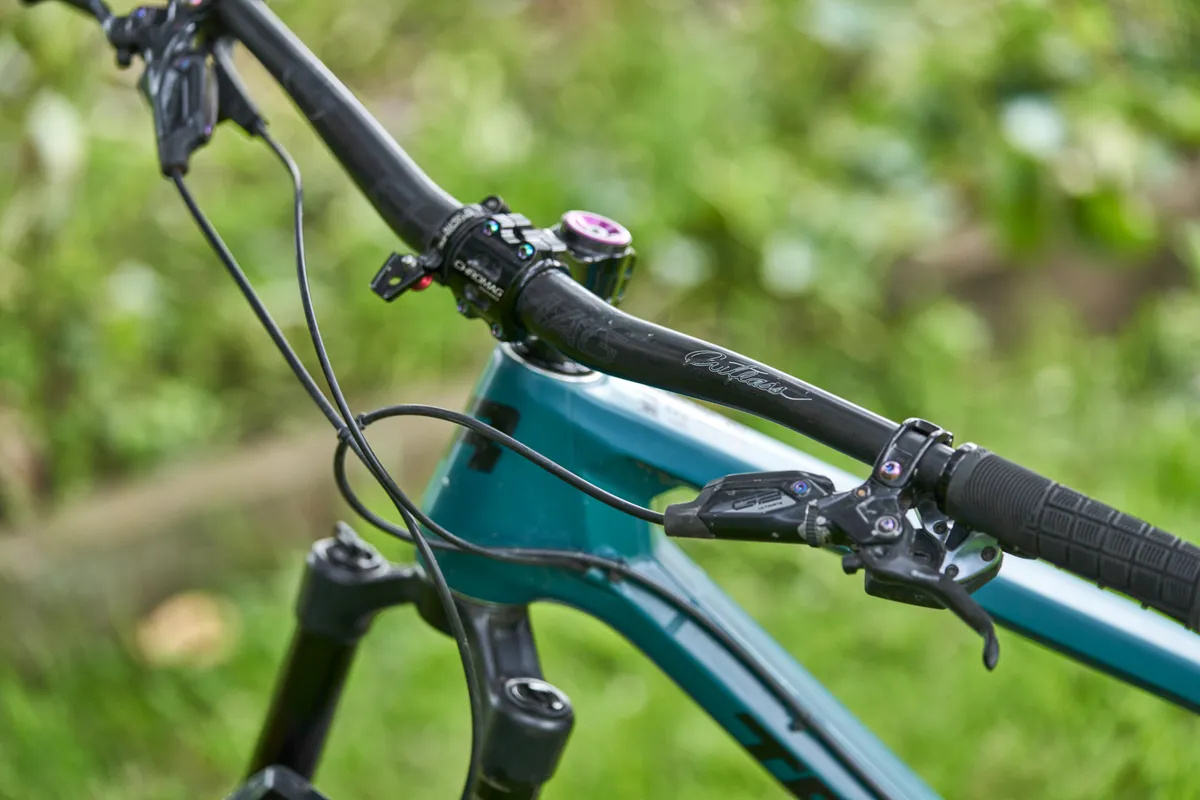
Contradictory is a word I would use to describe the Spur’s current component build.
As a bit of a closet weight weenie, I always like to watch the grams, so there are some light but durable components on the Spur. However, there’s also excess weight in other areas.
Some parts were chosen simply because I like them – they look pretty or are a bit bling, and for that, I say to hell with the extra weight.
The perfect case in point is the cockpit and seating area.
Being an animal lover, I'm a big fan of Chromag’s snarling bear aesthetic. Given the brand's British Columbian origins, I know its kit is durable. It does make me wince when it hits the scales though.
I could chop about a good 100g or so from the Ranger stem alone. Even with some lovely oil-slick Ti bolts, it’s a weighty stem.
The matching Cutlass Carbon handlebar is not the lightest carbon bar around at a claimed 247g. However, the shape is comfortable, it has a decent degree of flex to soak up trail vibrations and has stood up to a lot of abuse. That makes the trade-off worth it in my eyes.
Likewise, the 170mm RockShox Reverb AXS dropper post is most definitely not a lightweight choice. It has less drop than the 180mm OneUp V2 post that came on the bike as stock.
However, I love the smooth feel and cable-free appearance, especially with a matching AXS drivetrain.
Up until recently, I was running an eclectic drivetrain. I paired SRAM’s GX AXS controller and derailleur with an X01 cassette, oil slick XX1 chain and Truvativ Descendant cranks.
With TRP’s new EVO12 drivetrain needing some testing, I’m back on a cable drivetrain and enjoying it so far.
I have done a decent number of rides with this drivetrain, and there’s much less chain slap and noise than GX AXS. Shifting under load seems good too.
It’s not quite up to SRAM’s new T-Type Transmission standard, but very impressive all the same.
More from the SRAM stable
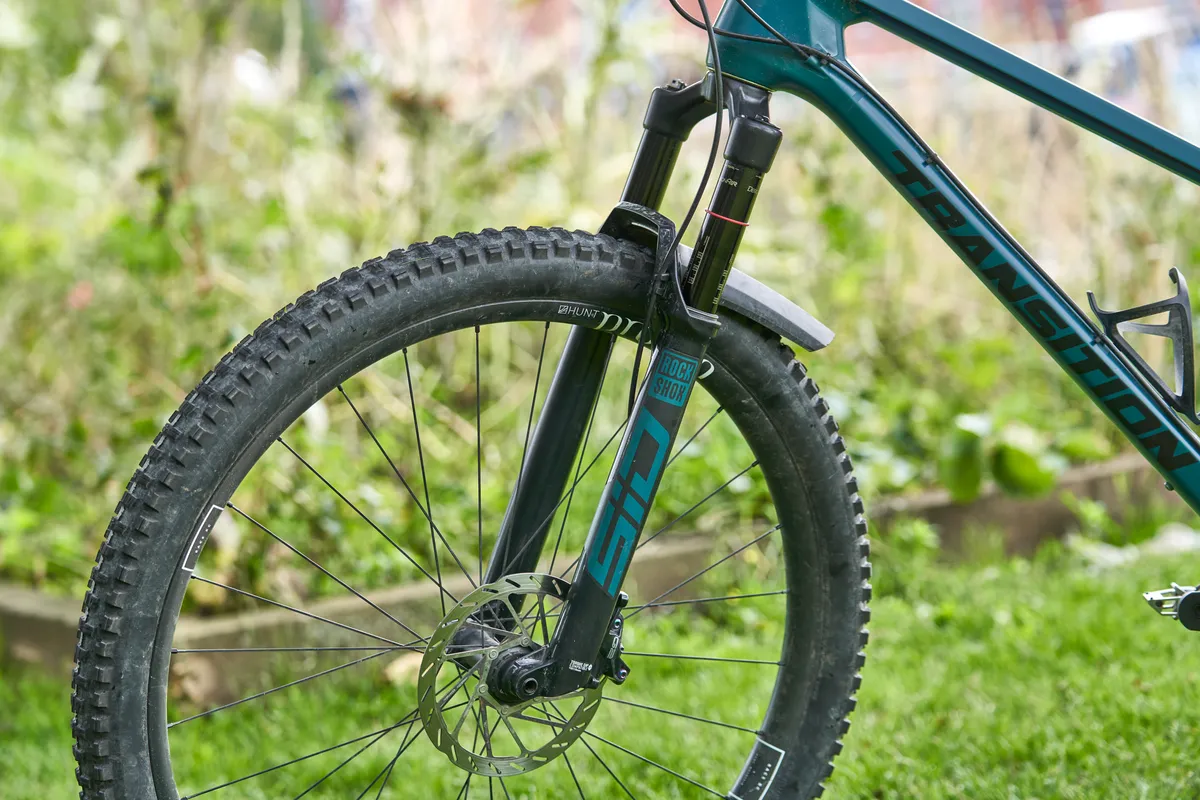
The suspension and brakes are also from the SRAM stable.
RockShox’s SID fork and SIDLuxe shock take care of bouncing duties. Featuring alongside are some, naturally, oil slick rainbow-finished SRAM G2 Ultimate brakes.
There have been many words written about how good the latest SID is and the SIDLuxe has been equally impressive.
It’s amazing how much performance RockShox has pulled out of this tiny little shock. Both units feel like a very good match for the Spur. They're lightweight but very capable in the rough stuff.
I’ll soon be installing an Öhlins RXC34 m.1 fork and TXC2Air shock, so we'll see how they perform in testing.
As nice as the G2 Ultimate brakes look with the other oil-slick components, I’ve found the performance pretty average.
They have a fair amount of power for a four-piston brake and the modulation of that power is excellent. It's telling of the Spur’s prowess that I wish I’d gone for SRAM’s burlier Code RSC brakes though.
I’ve had two different sets of Hunt wheels on the Spur. First, its aluminium XC Wide hoops and more recently the new Proven Carbon Race XC.
Both have been a good fit for the fast, technical rides I enjoy. The added internal rim width (25mm vs 30mm) combined with the reduced weight of the Proven wheels has taken the rolling stock to the next level.
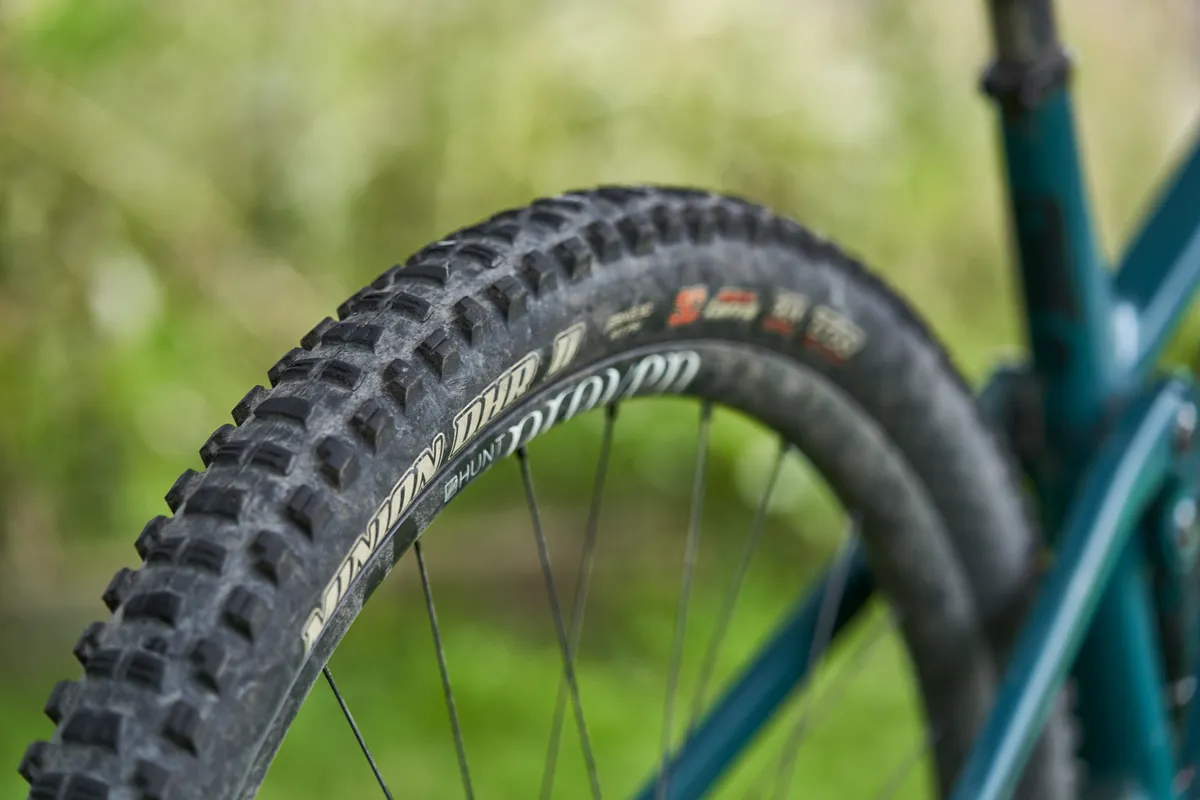
Wrapped around both sets of hoops has been an array of Maxxis tyres. A Dissector and Rekon combo came stock with the Spur, though I went a little too racey with a Rekon Race and perhaps a shade aggressive in the DHR II.
Of all the combos and different treads I’ve tried, I keep coming back to the trusty DHR II, however.
Yes, they roll a smidge slower than the others, but the added grip is a quality skill compensator when I’m chasing (or at least trying to keep up with) BikeRadar's MTB tech editors.
What’s next for the Spur?
As much as I love the Spur as it is, there’s always room for improvement.
The move to Öhlins suspension will be an interesting test piece, because I was impressed on the launch. I’m keen to try some burlier brakes too and add yet more weight to this light but semi-burly contradiction of a bike.
I’m also excited to try Berd’s rope spokes to see how they ride in comparison to regular steel spokes. Hopefully, their reduced weight can help me claw back some of the grams I’ve added.
That weight probably makes this little shredder slightly more capable than it should be for a bike with so little travel.
